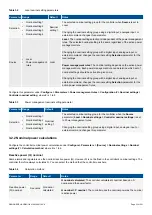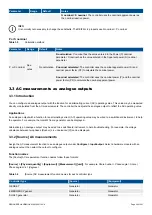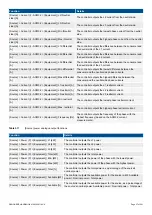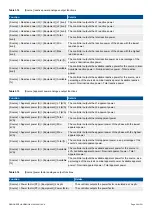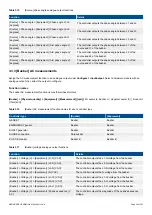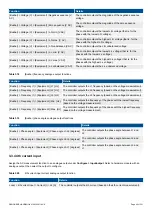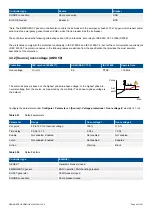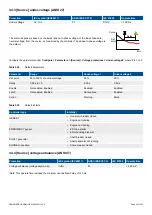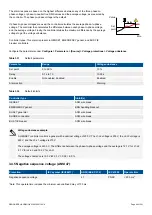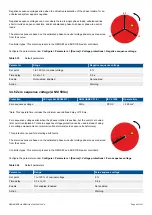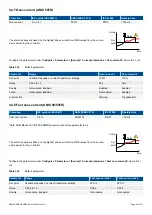
Parameter
Range
Fast over-current 1
Fast over-current 2
Latch
Not enabled, Enabled
Enabled
Enabled
Action
Trip [Breaker]
Trip [Breaker]
3.4.9 Current unbalance (ANSI 46)
Protection
IEC symbol (IEC60617)
ANSI (IEEE C37.2)
IEC 61850
Operate time
Current unbalance
IUB>
46
-
< 200 ms*
*Note: This operate time includes the minimum user-defined delay of 100 ms.
The alarm response is based on the highest difference between any of the three phase current
true RMS values, as measured by the controller. You can choose either the
Average method
(ANSI) or the
Nominal method
to calculate the
Current unbalance
. See the description and
examples below.
Controller types: These alarms are present in GENSET, EMERGENCY genset, and BUS TIE
breaker controllers.
Set
point
Value
time
Delay
Configure the parameters under
Configure > Parameters > [Source] > Current protections > Current unbalance (average
calc.)
or
Current unbalance (nominal calc.)
.
Table 3.37
Default parameters
Parameter
Range
Current unbalance (average calc.)
Current unbalance (nominal calc.)
Set point
0 to 100 %
30 %
30 %
Delay
0.10 s to 1 h
10.00 s
10.00 s
Enable
Not enabled, enabled
Enabled
Enabled
Action
Warning
Warning
Average method
The
Average method
uses the ANSI standard calculation method to determine current unbalance. The controller calculates the
average current for the three phases. The controller then calculates the difference between each phase current and the average
current. Finally, the controller divides the maximum difference by the average current to get the current unbalance. See the example
below.
Average method example
A GENSET controller controls a genset with a nominal current of 100 A. The L1 current is 80 A, the L2 current is 90 A, and
the L3 current is 60 A.
The average current is 76.7 A. The difference between the phase current and the average is 3.3 A for L1, 13.3 A for L2
and 16.7 A for L3.
The current unbalance is therefore 16.7 A / 76.7 A = 0.22 = 22 %.
Nominal method
The controller calculates the difference between the phase with the highest current, and the phase with the lowest current. Finally,
the controller divides the difference by the nominal current to get the current unbalance. See the example below.
DESIGNER'S HANDBOOK 4189340911K UK
Page 67 of 521

